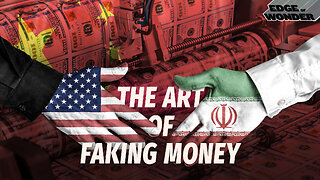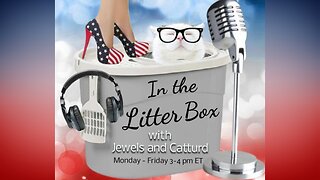Ernie Cefalu Discusses "The Rock 'n Bowl" - Ernie's Corner
Award-winning creative designer, Ernie Cefalu has been sharing about the unique and distinct album covers that he has designed. Ernie shares so many exciting times working and designing some of the most creative designs for the Rock n Roll Bowl.
You can listen to "The Block Party" and "Ernie's Corner" in Bel Air, Maryland on 91.1 FM (WHFC) and we reach out to you on the net at www.whfc911.org. You can also hear us on Q101.3 (WQMR) in Rocky Mount, VA at 8 p.m.. Meet you on the air Saturday.
-
Ernie Cefalu (born 1945) is a contemporary artist and Senior Creative Director, currently working out of Los Angeles, CA. He is known for designing art for music albums.
Cefalu attended the California College of Arts and Crafts (now California College of the Arts) and graduated in 1969 with honors. Soon after, Cefalu started his career on Madison Avenue at Carolini Advertising, where his first assignment was to create the campaign and graphics for the International Paper Company's 1970 national sales meeting. His solution took the form of an elaborate, award-winning off-Broadway musical production, Dolls Alive. In the early part of 1970 Cefalu became an Art Director at Norman Levit Advertising where he created the Jesus Christ Superstar album and Angels in an agency shootout with the Decca Records account as the prize
At the end of 1970, Cefalu joined forces with Craig Braun, Inc. in New York, and worked on The Rolling Stones Sticky Fingers album as well as Grand Funk Railroad's E Pluribus Funk. Eight months later, in mid-1971, he opened a satellite office in California for Braun, the head Creative Director. There, he was the creative force behind a string of famous album covers for Alice Cooper's School's Out, and Cheech & Chong's Big Bambu. He is also credited with being one of the people to design The Rolling Stones[3] "Lips and Tongue" logo.
Cefalu opened his own agency, Pacific Eye & Ear, in January 1972. Over the next 15 years, he created another 194 album covers for rock artists such as The Doors, Alice Cooper, Aerosmith, The Bee Gees, The Guess Who, Black Sabbath, Jefferson Airplane, the Modern Jazz Quartet, Burton Cummings, Grand Funk Railroad, Iron Butterfly, and Black Oak Arkansas. Cefalu's collaborations with then emerging illustrators such as Drew Struzan, Bill Garland, Joe Petagno, Carl Ramsey, Ingrid Haenke and Joe Garnet led Pacific Eye & Ear's quest to become one of the top album design companies in the country.
In 1985, Cefalu formed David Hale Associates and broadened his client roster beyond the music industry to include the food companies Nestle and Kraft. Over the next decade and a half, his work helped more than 20 brands in five divisions post double-digit sales growth. In 1990 he was retained by Panavision Motion Picture Cameras, NGK Spark Plugs and Rockwell International.
Canned Heat is an American blues and rock band that was formed in Los Angeles in 1965.[1] The group has been noted for its efforts to promote interest in blues music and its original artists. It was launched by two blues enthusiasts Alan Wilson and Bob Hite, who took the name from Tommy Johnson's 1928 "Canned Heat Blues", a song about an alcoholic who had desperately turned to drinking Sterno, generically called "canned heat". After appearances at the Monterey and Woodstock festivals at the end of the 1960s, the band acquired worldwide fame with a lineup of Hite (vocals), Wilson (guitar, harmonica and vocals), Henry Vestine and later Harvey Mandel (lead guitar), Larry Taylor (bass), and Adolfo de la Parra (drums).
The music and attitude of Canned Heat attracted a large following and established the band as one of the popular acts of the hippie era. Canned Heat appeared at most major musical events at the end of the 1960s, performing blues standards along with their own material and occasionally indulging in lengthy 'psychedelic' solos. Three of their songs — "Going Up the Country", "On the Road Again", and "Let's Work Together" — became international hits.
Since the early 1970s, numerous personnel changes have occurred. For much of the 1990s and 2000s and following Taylor's death in 2019, de la Parra has been the only member from the band's 1960s lineup. Walter Trout and Junior Watson are among the guitarists who played in later editions of the band
-
 1:17:22
1:17:22
Kim Iversen
3 hours agoTit For Tat: Hunter's Political Token Conviction | Israel “It Depends On The Interpretation" Re: Ceasefire Deal
12.4K20 -
 DVR
DVR
Laura Loomer
4 hours agoEP52: THE GREAT REPLACEMENT: Trump and Biden Spar Over Border Policies Ahead of First Presidential Debate
11.5K9 -
 1:29:32
1:29:32
Glenn Greenwald
4 hours agoHunter Biden's Conviction Proves Media’s 2020 "Disinfo" Campaign; Joe Biden's Approval Ratings at Record Low After Trump Verdict; Liberals Embrace Prison Fantasies to Warn of Trump’s Dangers | SYSTEM UPDATE #281
37.4K61 -
 58:47
58:47
Edge of Wonder
4 hours agoThe Art of Counterfeiting Currency: CIA, China & Iran Sponsored Fake Money?
17.2K6 -
 2:23:58
2:23:58
WeAreChange
5 hours agoTIM's ON THE LIST! Ukraine's New American Target Lists Surface!
39.5K72 -
 2:04:25
2:04:25
The Quartering
6 hours agoAmerican Flags Banned In Gym, Hot Dog Champion Gets Woke, Based NBA Coach & Woke Gaming Meltdown
44.8K7 -
 1:18:21
1:18:21
Redacted News
7 hours agoRussia LAUNCHES Nuclear War Game Exercises on U.S. Doorstep, Hunter found guilty | Redacted Live
116K363 -
 2:02:37
2:02:37
Revenge of the Cis
7 hours agoEpisode 1356: The House Always Wins
65.2K13 -
 1:02:33
1:02:33
In The Litter Box w/ Jewels & Catturd
1 day agoDems Crash & Burn | In the Litter Box w/ Jewels & Catturd - Ep. 584 - 6/11/2024
88.4K39 -
 1:05:08
1:05:08
Barstool Chicago
7 hours agoWHITE SOX DAVE CLAIMS HE CAN "LOCK-DOWN" ANYONE AT BARSTOOL 1V1
67.3K5